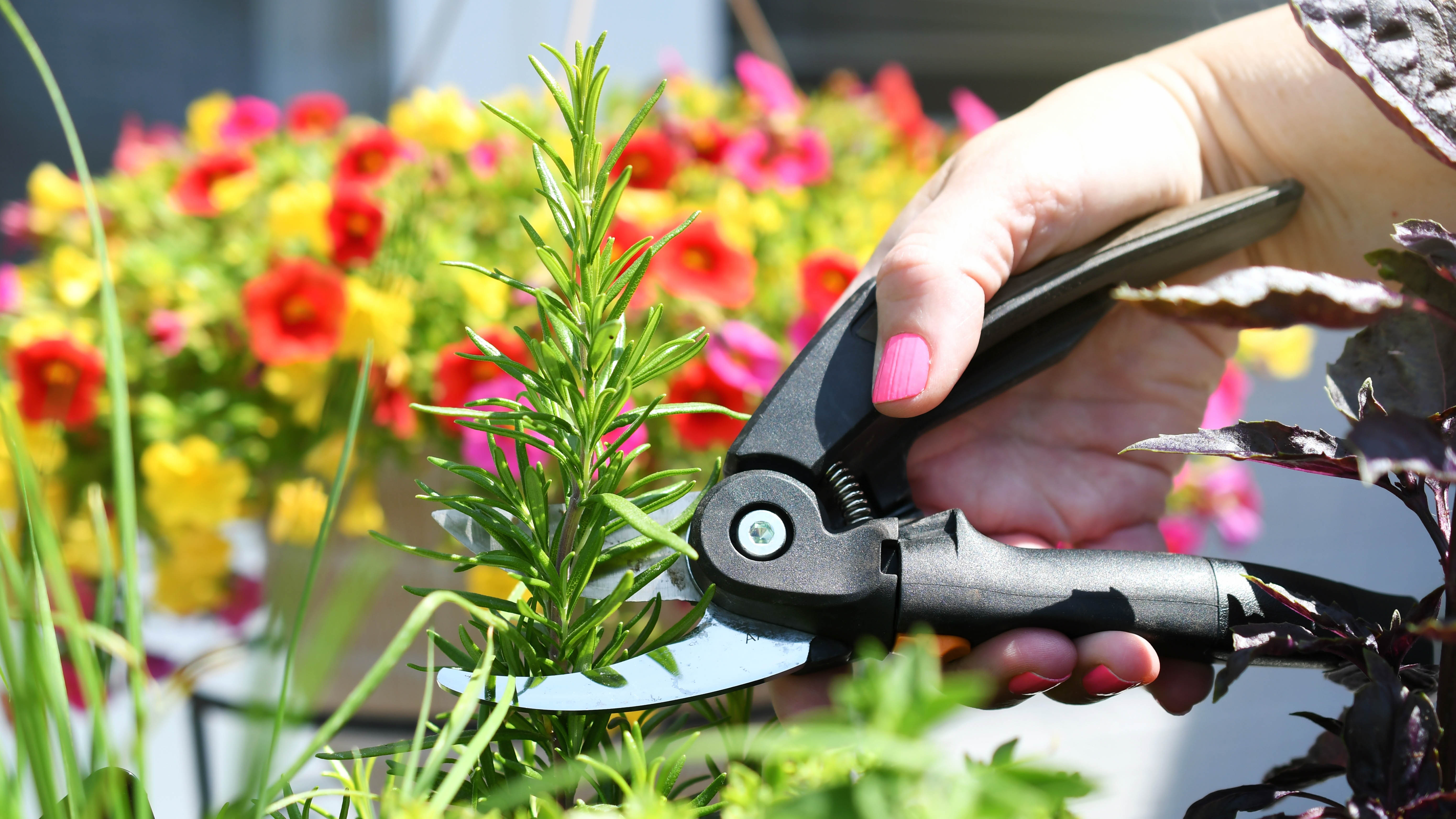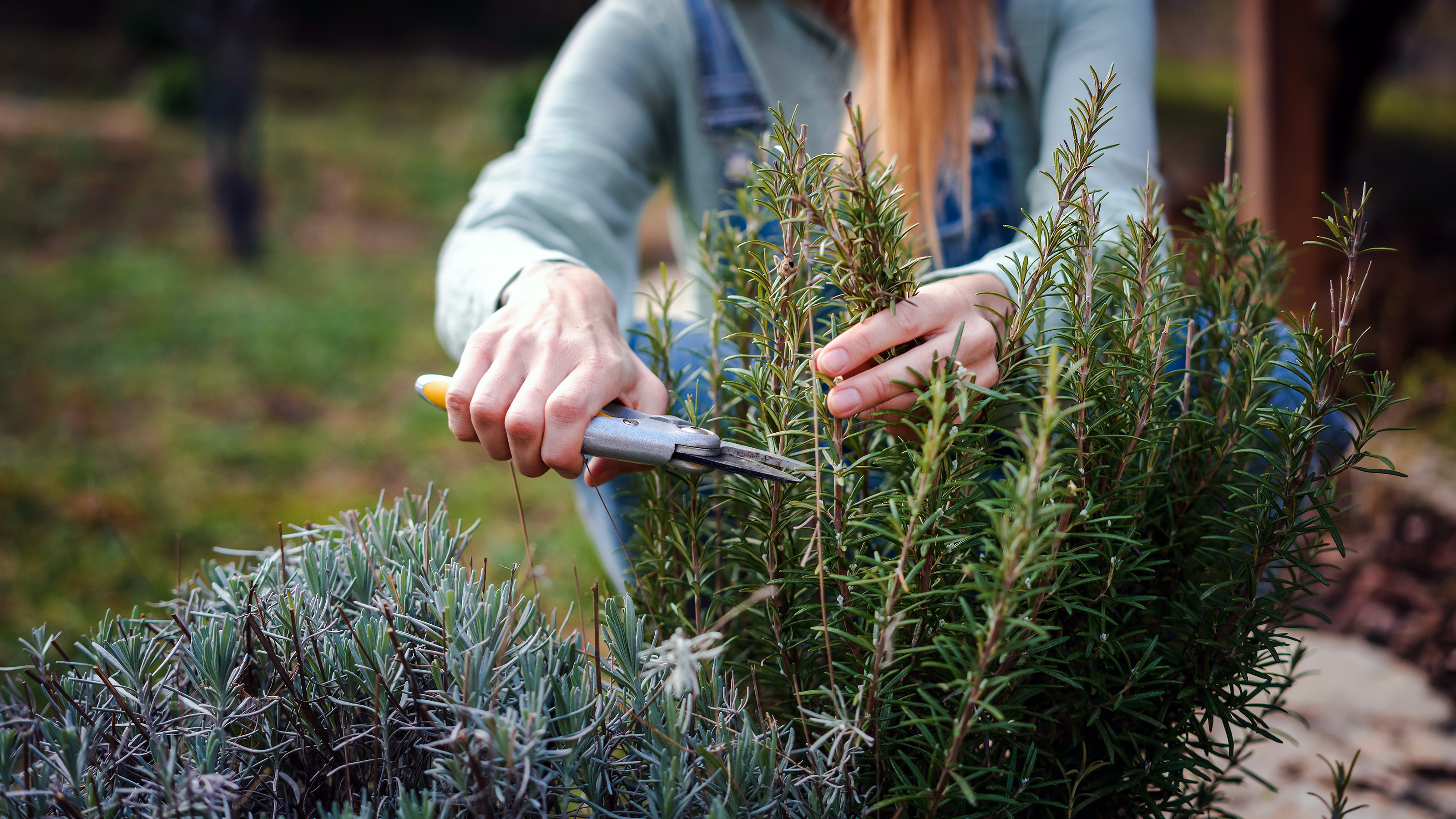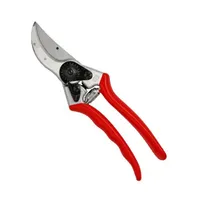It's easy to overwinter rosemary — follow this simple 5-step routine
Rosemary is easy to maintain, even in the cold weather

Rosemary is a beloved garden herb, thanks to its pleasant savory scent, multiple culinary uses and easy maintenance needs. No matter where you live, growing rosemary is a pretty simple way to get into gardening, and many gardeners find that their herb plants need little attention once they’re established in their home.
That is, until the weather turns cold.
These plants originate in the Mediterranean, and that means they can need a bit of extra help when it comes to making it through the winter. The climate of the Mediterranean features mild, wet winters and temperatures that rarely drop below freezing. This means that rosemary has not adapted to withstand the more extreme conditions that characterize winters in much of the United States.
To keep plants in healthy enough condition to thrive again next spring, gardeners will need to “overwinter” their rosemary.
The good news is that overwintering rosemary is a straightforward and quick process that requires only a few simple steps.
How to overwinter rosemary
Step 1. Determine your agricultural zone

Since rosemary is adapted to a Mediterranean climate, rosemary will definitely need a helping hand in zone 6 and any colder regions
Gardeners use the agricultural growing zones of the US to determine what is suitable to grow in their area and map out the best timelines for the growing season. Officially, these zones are known as the USDA Plant Hardiness and Growing Zones, and they are calculated by looking at the average minimum winter temperatures in each area. Each zone has a range of 10 degrees Fahrenheit, with zone 1 seeing a range of 60 to 50 degrees and zone 13 seeing a range of 60 to 70 degrees.
Since rosemary is adapted to a Mediterranean climate, rosemary will definitely need a helping hand in zone 6 and any colder regions. This covers the Northeast and much of the Midwest. Gardeners in zones 7 and 8 may also want to take preventative measures to ensure their rosemary is sheltered from the worst of winter weather, but this will depend on individual microclimates and conditions.
Get instant access to breaking news, the hottest reviews, great deals and helpful tips.
Step 2. Choose between indoors or outdoors

For the second step, you should decide whether you will A: take a cutting to move indoors, or B: leave the plant outside for the winter.
In the coldest parts of the US, the garden will simply be too cold for any rosemary plants to make it through unscathed – even if you use covers and apply mulch to warm the area. The good news is that this doesn’t doom your plant. Instead, you’ll want to take a cutting from the plant and propagate that either indoors or in a shed or other sheltered environment that is less vulnerable to extreme temperature fluctuations.
If you live in a milder zone, say 5-8, then you might be able to care for the rosemary while it stays in the ground throughout the winter months. This is especially true if the plant is already growing in a more sheltered part of the garden, protected from the worst of the elements. You increase the risk of the plant being damaged by extreme conditions – but you also may get to save and then enjoy the bulk of the plant next year, if you take the right care.
Both options are effective in the right places, so go with what’s best for your specific zone.
Step 3, Option A: Take your cutting

If you’ve chosen to take a cutting, make sure to use clean and sharp tools that will cause minimal damage to the plant. You want each cut to be smooth and efficient, so that the parent plant doesn’t experience unnecessary stress. Clean shears also reduce the chance of transferring any disease between plants; if you are taking multiple cuttings, clean the blades each time.
You can either:
- Take an individual branch cutting, in which case it should be a few inches in length, with leaves from the lower end removed.
- Or, you can dig up a larger part of the original plant, one that will fit easily in a container, and move the entire clump.
Individual cuttings without roots should be placed in a vase of water, to help promote root growth. Once roots have formed, the cutting can be planted in soil. Dug up larger cuttings with roots intact can be replanted directly into a container full of healthy soil.
Step 3, Option B: Prune your rosemary to a smaller, manageable shape

If you’re leaving the plant in the ground, still take the time to cut back any older, damaged foliage and make the rosemary more compact. This will ensure that the plant doesn’t waste unnecessary energy on old or dying growth, while also receiving the message that it will be needed to grow again next spring. If your plant is particularly straggly or large, you may also want to make additional cuts so that its overall shape is smaller and closer to the ground. This will make it easier to protect from the elements. Some experts recommended cutting away most of the plant, until only a couple of inches of growth above the central stem remain.
As with the cuttings, make sure you are using clean, sharp tools for all your pruning.
The Felco F-2 bypass pruner is one of the most popular of its type among garden experts. Plus, it's rated the Best Professional-Grade Tool in our best pruning shears buying guide. The heavy-duty pruner is incredibly well made and has an ultra-sharp blade. Just be sure not to loss it in the shrubbery, as it should see you through years of use.
Step 4: Create warmer conditions for your rosemary

For plant cuttings that are being moved, choose a location that is still cool in temperature but protected from the elements. This might be an outdoor shed, a basement, a garage, or anywhere that still gets some natural light and airflow, without being fully exposed.
In general, it is not recommended to move rosemary fully indoors into the home, as heating can dry out the air and create a poor environment for the rosemary. There is also the risk of the outdoor plant spreading any disease or pests to indoor plants — so keep them separate where possible.
If the plant is staying in the ground or in a fixed container, create warmth by layering mulch, straw or other natural insulation around the base of the plant.
If the plant is staying in the ground or in a fixed container, create warmth by layering mulch, straw or other natural insulation around the base of the plant. This will help to trap heat from the soil and prevent the ground – and therefore the roots – from freezing when the temperature drops.
Some people like to loosely wrap pots of rosemary in a burlap sack or bag, with the interior filled with oak leaves to create another layer of insulation. This is known as double-potting.
For plants in the ground, you can recreate this effect by using stakes to set up a structure of burlap around the rosemary; fill in the space with oak leaves.
Step 5: Adjust the care schedule for your dormant plant

Rosemary that overwinters will not be actively growing. Instead, it enters a state of dormancy that allows it to conserve energy, so that it is ready to burst into life come the spring.
Since dormant plants aren’t in active growth, they don’t need the same level of water or nutrients that they might throughout the spring and summer. This means you should not be fertilizing soil or watering the plant too much. In fact, overwatering rosemary during the winter is an easy way to undo your hard work and kill your plant before spring arrives! Instead, aim to water sparingly and only supplement natural conditions if the winter is particularly dry. Rosemary planted in arid climates may benefit from occasional misting, but be restrained.
With these 5 easy steps, your rosemary plant should make it through the cold months and emerge fresh and happy in Spring 2026.

Follow Tom's Guide on Google News and add us as a preferred source to get our up-to-date news, analysis, and reviews in your feeds.
More from Tom's Guide

Despite making her home in urban metropolises, Madeleine Streets has been nurturing a green thumb for decades.
Raised by a garden designer, she is putting that childhood education to use by helping others learn how to make their garden bloom, while filling her own New York home with cat-friendly plants.
When not writing about gardening and the outdoors, Madeleine loves to cook, study wine and borrow books from her local library.
You must confirm your public display name before commenting
Please logout and then login again, you will then be prompted to enter your display name.

